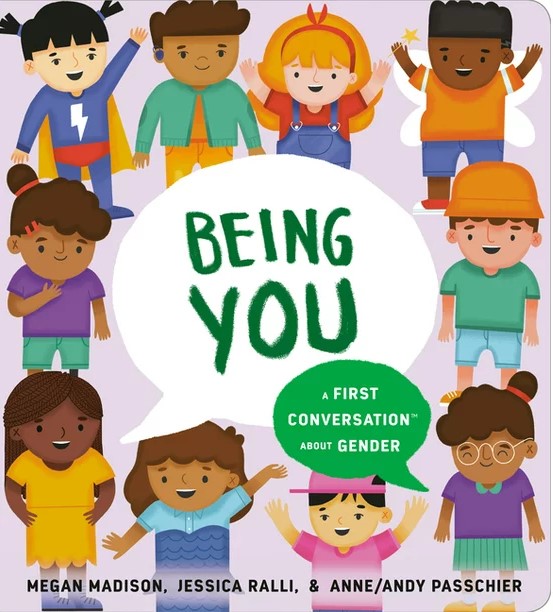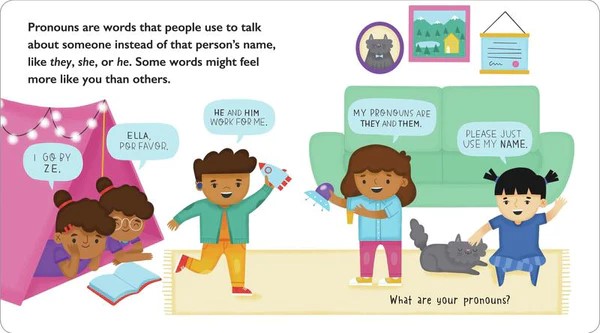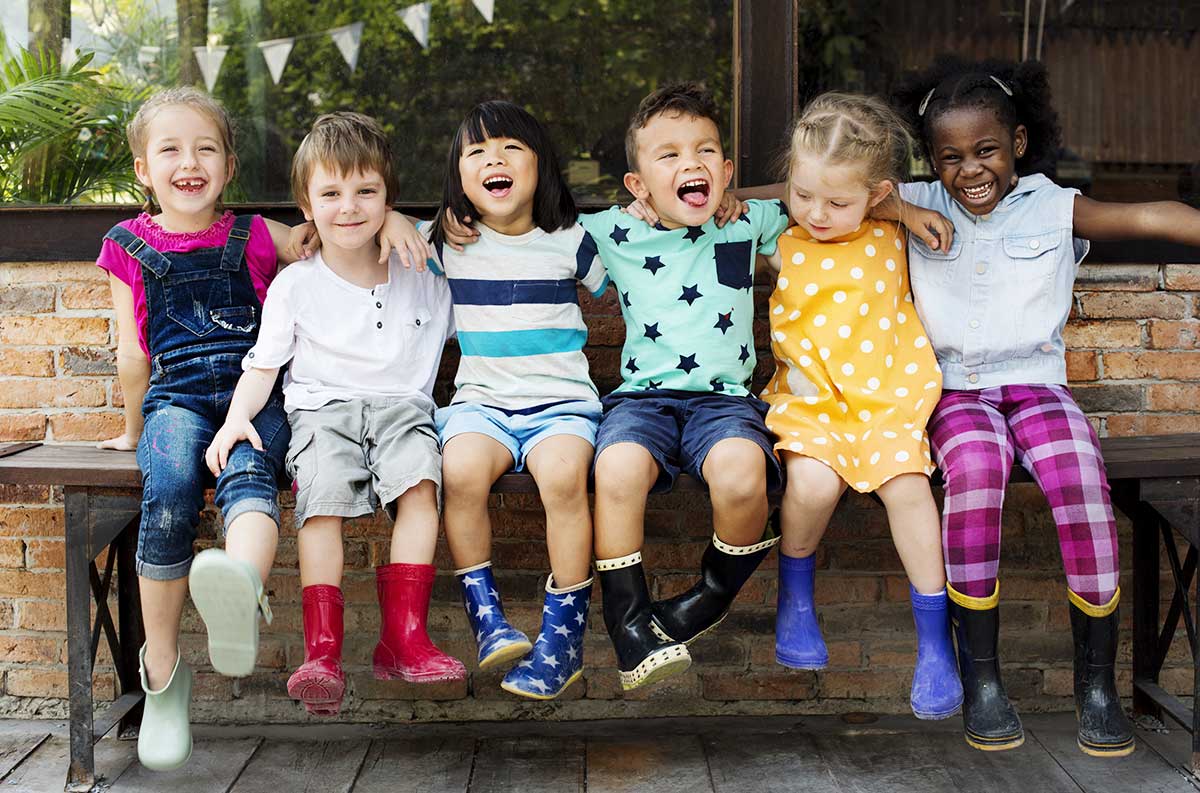
Inclusive Children's Book Teaching Guide
Being You: A First Conversation About Gender
What is this book about?
Being You offers an opportunity to talk about gender with young children in an informed, safe and supported way. Developed by early childhood experts and activists, this topic-driven board book offers concrete, child-friendly language and colorful illustrations that teachers and parents can leverage for further discussion.
While young children are avid observers and questioners of their world, adults often shut down or postpone conversations about complicated topics because it’s hard to know where to begin. However, research shows that talking about issues like gender helps young children understand what they see, develop self-awareness and build self-esteem. These discussions also enable children to recognize (and eventually confront) biased behaviors such as discrimination.
Part of the First Conversations series—which is based on research showing that race, gender, consent, and body positivity should be discussed with children as young as the age of two—Being You begins the conversation about gender with a supportive approach that considers both the child and the adult. You'll find additional resources and ideas for extending the conversation at the end of the book.
Who is depicted in this book?
- Children who are LGBTQ+ and use a variety of pronouns
- Diverse children (race/ethnicity/ability) who transcend gender stereotypes
What early childhood themes and concepts does this book explore?
- How we show the world who we are through the toys we choose, favorite activities and colors, clothing, and hairstyles
- Body parts and feeling good about the body we live in
- The many ways that children play together in and out of school
- Things that are fair versus unfair
How does this book support anti-bias education?
Being You shows how uncomplicated the issue of gender can be for young children, who explore the world and express their preferences without any preconceived ideas about binary concepts such as "boy" or "girl."
This book encourages children to feel good about and celebrate their own unique identities and those of their peers. This includes gender, however it is expressed. Being You can help affirm children’s diverse identities and introduce the idea that human diversity is something to be celebrated.
Note that this book mentions body parts and genitalia to introduce the ideas that bodies can differ and that adults assign gender based on a child’s body parts.
Being You concludes with a “Continue the Conversation” section that includes tips on discussing body parts, pronouns and gender expression, as well as more complex concepts such as patriarchy, feminism and activism.
Depending on how the book is shared or used—and the developmental level of the children—Being You may be used to support the following core goals from Anti-Bias Education for Young Children and Ourselves:
Identity—Teachers will nurture each child’s construction of knowledgeable and confident personal and social identities so that children will demonstrate self-awareness, confidence, family pride, and positive social identities.
Diversity—Teachers will promote each child’s comfortable, empathetic interactions with people from diverse backgrounds so that children will express comfort and joy with human diversity, use accurate language for human differences, and form deep, caring connections across all dimensions of human diversity.
How can this book be used to meet early childhood learning standards?
For all ages
Use Being You: A First Conversation About Gender to meet early childhood literacy standards
For children from birth to age three
Teaching suggestion: Point out people in the book and notice and point to their similarities and differences (clothing, skin color, hairstyles, interests).
What Illinois Early Learning Guideline does this meet for children from birth to age three?
Developmental DomainCognitive Development
Standard: Concept DevelopmentChildren demonstrate the ability to connect pieces of information in understanding objects, ideas and relationships.
Indicators for children:
- Begins to focus on objects, sounds and people (Birth–9 months)
- Identifies and indicates objects and people in pictures (7–18 months)
- Begins to identify and name objects and people (16–24 months)
- Identifies characteristics of objects and people (21–36 months)
Teaching suggestion: Point out and name body parts (elbow, nose, belly button) in the book and encourage children to find their own.
What Illinois Early Learning Guideline does this meet for children from birth to age three?
Developmental DomainLanguage Development, Communication and Literacy
Standard: Early LiteracyChildren demonstrate interest in and comprehension of printed materials.
Indicators for children:
- Imitates gestures and sounds during activities (7–18 months)
- Repeats familiar words in a book while being read to (16–24 months)
Teaching suggestion: Build children’s awareness of quantity and numbers. The engaging and clear illustrative style of Being You provides many opportunities to model the counting of people and objects on each page spread.
What Illinois Early Learning Guideline does this meet for children from birth to age three?
Developmental DomainCognitive Development
Standard: Quantity and NumbersChildren demonstrate awareness of quantity, counting and numeric competencies.
Indicators for children:
- Imitates counting (7–18 months)
- Begins to use number words to label quantities, although incorrect (7–18 months)
- Communicates amount of familiar objects (16–24 months)
- Begins to use “one,” “two” and “three” to identify very small quantities without counting them (16–24 months)
- Begins to count objects (21–36 months)
For preschoolers (ages three to five)
Teaching suggestion: Encourage the children to discuss the similarities and differences between the featured characters. Then point out that assumptions about their gender identities or pronouns cannot be based on appearance alone. Talk about the limits and inaccuracies of gender stereotyping, such as the idea that toys, activities, clothes, or interests are "boy things" or "girl things."
What Illinois Early Learning and Development Standards does this meet for preschoolers?
Social/Emotional Development Standard31ADevelop positive relationships with peers and adults.
Benchmark 31.A.ECb:
Recognize the feelings and perspectives of others.
Benchmark 31.A.ECe:
Develop positive relationships with peers.
Teaching suggestion: Support the gender expression of each child by using their chosen pronouns and defaulting to "they" rather than the gendered terms "he" or "she." Listen to and validate their use of pronouns and their expressions of gender in play, dress and interests.
What Illinois Early Learning and Development Standards does this meet for preschoolers?
Social/Emotional Development Standard30BRecognize own uniqueness and personal qualities.
Benchmark 30.B.ECa:
Describe self using several basic characteristics.
Teaching suggestion: As you explore the book with children, reinforce the message that all toys are for everyone and that we support one another in our choices of play. This provides a positive example of group/community citizenship in the classroom while supporting gender exploration.
What Illinois Early Learning and Development Standards does this meet for preschoolers?
Social Studies Standard14AUnderstand what it means to be a member of a group and community.
Benchmark 14.A.ECa:
Recognize the reasons for rules in the home and early childhood environment and for laws in the community.
See inside this book.

What other resources are available?
The First Conversations website includes adult descriptions of the inclusive topics featured in the series.
Visit the publisher’s website for a read-aloud sample.
